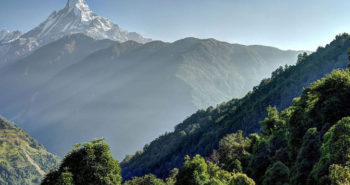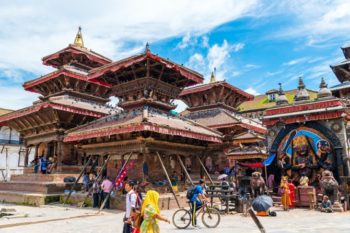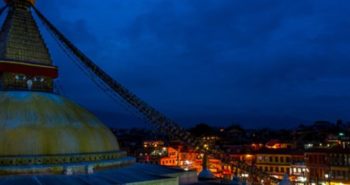When is the Best Time to Trek Everest Base Camp Trek
When thinking about going to the Everest Base Camp – EBC for a short – Trek, there are several factors to consider. Not least is the weather.
Assuming you are not tied to a certain time with regard to your annual leave, you should pick the time of year that is right for you in terms of availability (sometimes it is extremely hard to get a domestic flight or accommodation on the trail), your ability (harder to hike in snow or rain), and what you plan to do (photography, meet other trekkers, sample local life, or simply embrace the great outdoors).
Most of the information you will read says ‘spring’ and ‘autumn’ are the best times to visit EBC. While this is true, this shouldn’t deter you from considering other times of the year. And if you do go during spring and autumn, no one can guarantee that during your particular 14-day visit, the weather will behave itself!
Let’s take a closer look at the different seasons in the Everest Region.
Spring: March to May
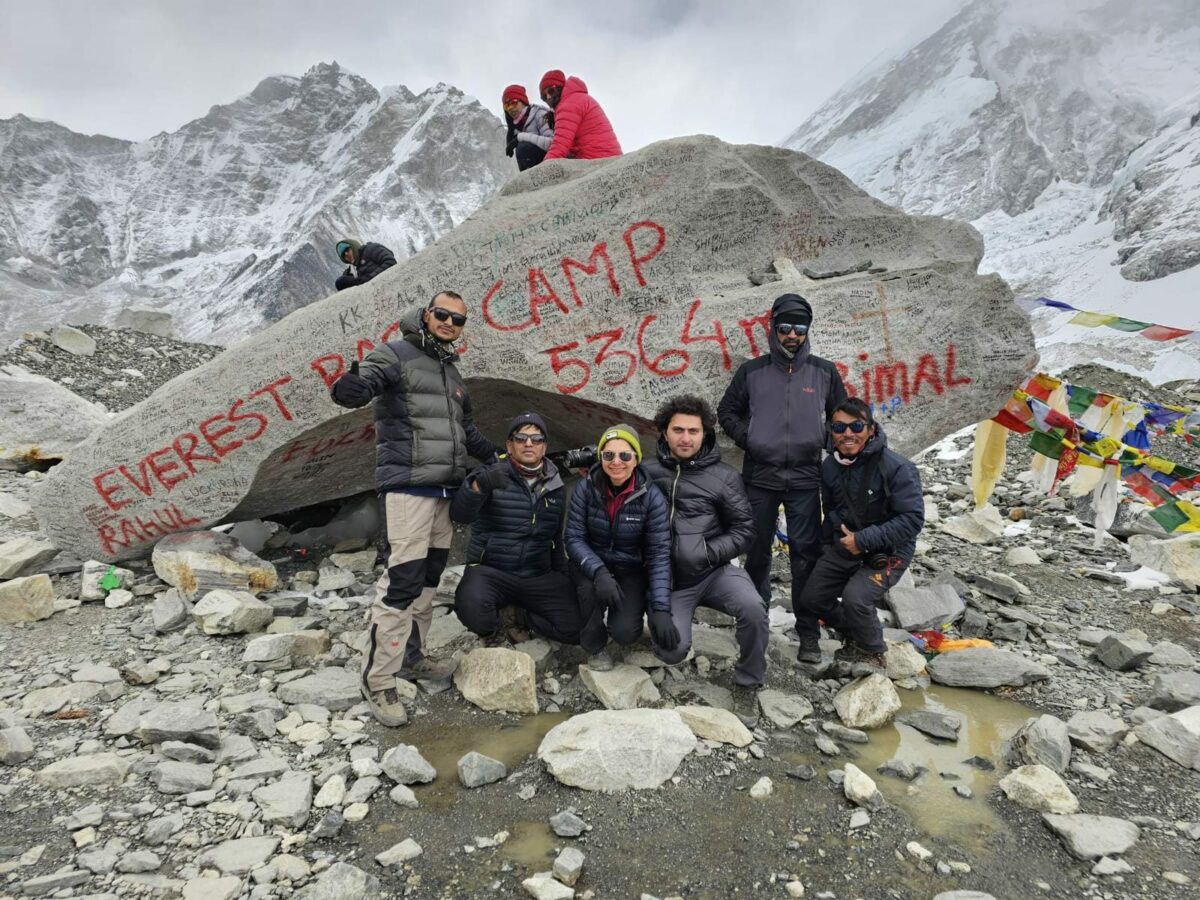
March to May is the busiest time in the Everest region for trekking and climbing. With clear skies and glorious weather, it attracts visitors from all over the world.
Since this was the best time to attempt to summit the highest mountain in the world, Mount Everest, it is no surprise that the first successful summit took place on 29 May 1953. Every year we see a number of different expeditions on the mountain around this time – just waiting for what is commonly known as the good ‘weather window’ to push on for the final ascent.
While climbing expeditions will be extremely well prepared for the cold weather – and it is extremely cold on the mountain – potential trekkers may be more interested to know how cold it will be for them on the route to Everest Base Camp and what they should carry in the way of clothing.
Temperature: you might be surprised to know you may get a maximum of 20 degrees centigrade during the daytime and around 5 degrees at night. Early mornings when you start your trek for the day and evenings will be cold, but during the day, you may want to ditch the heavier jacket and bask in the high-altitude sun!
In regards to what to bring to wear, there are one-word ‘layers.’ You want to be able to wrap up warmly when it is chilly yet keep cool when the weather is warmer, and the hiking is heating you anyway. So plenty of layers that are easy to take off (and then carry) on the trail. Material that absorbs sweat is best for that first layer next to your skin, and a good fleece or down jacket is the final protection against the cold. And, like we already said, the weather is not guaranteed, so don’t prepare only for those 20-day time degrees – it may be much cooler!
Benefits of spring: Like spring in many locations, at the lower altitudes, this is the time to appreciate the lovely flowers and perhaps spot some wildlife – you are travelling in the Sagarmatha National Park, after all. The sky will be blue, and the snowy mountains will glow against this clear backdrop. There will be less likelihood of flight cancellations or delays due to bad weather.
Disadvantages of Spring: The main disadvantage is the number of people on the trails. Sometimes it may be difficult to get accommodation for the night unless you are traveling with a guide who has pre-booked for you. On the other hand, there will be plenty of company to share your stories in the evenings.
Monsoon: June to August
June to August is the monsoon period in Nepal. In some areas, such as Kathmandu, pre-monsoon rain can cause just as much problem as the monsoon itself. On the other hand, some areas, such as Upper Mustang, fall in the rain shadow, so rainfall is extremely low at any time of year.
In the Everest Region, you should expect rain at the lower altitudes (below 3,500m) and some at higher altitudes. Again we cannot be sure of the exact weather.
Temperature: it is also quite warm (18 degrees centigrade) in the daytime. But if it rains, the temperature will, of course, drop considerably. Early mornings and nights will be very cold, and you should be prepared for it to drop well below freezing.
You should carry waterproof trousers (that slip over your normal trekking ones) and a waterproof jacket. Remember to bring a waterproof cover for your backpack and your day pack. Footwear should also be waterproof.
Benefits of monsoon: the only advantage is that the trails will be very quiet. Not many people chose to trek this season, so there should be plenty of choice regarding accommodation. At lower altitudes, the forests will be washed clean, and the rivers running fast, forming waterfalls in various places. The skies will be very atmospheric – white fluffy clouds, then dark, threatening rain clouds.
The disadvantage of monsoon: the weather! Not many people enjoy walking in the rain or climbing over slippery trails. Although if the rain doesn’t bother you, when you get to higher altitudes, with less likelihood of rain, it will be glorious to have the trails to yourself. Another disadvantage is that flights are often delayed due to the weather. But if you are not tied to an exacting timetable (never book your international flight the next day to a domestic flight), this can be turned into an advantage of another couple of days in the mountains!
Autumn: September to November
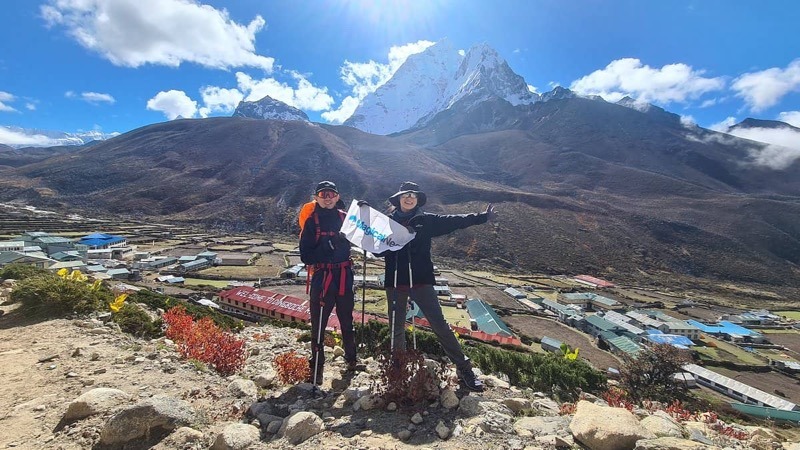
September to November is the second most popular time in the Everest region. Things are pretty much the same as in the spring – clear blue skies and wonderful mountain views. And being a popular time, the trails will be busy again, and lodges will be pretty full.
Temperature: again, similar to spring, it will be warm in the daytime and cold in the mornings and nights. However, the later you get into autumn, the colder it will get. There is a possibility of snowfall which will bring the temperature down even further.
Again, layers of clothing are essential, and you should bring waterproofs in case of snow. Discuss with your trekking agent whether you will need to bring (or hire) special footwear, such as crampons, in the event of snow on the trails.
Advantages of autumn: the beautiful clear mountain views and the relatively warm days. It is festival time in Nepal this season so everyone will be in an even more jolly mood than usual.
Disadvantages of autumn: again, this is a busy time with trekkers and climbers all making their way to their various treks and climbs. As it is festival time, many porters and guides will be taking leave, so at this time, it is very wise to book your trek well in advance. At the beginning of the season, rain in the lower altitudes is still possible. Rain in the lowland areas of the country can also cause flight delays. At the end of the season, there is the possibility of snowfall. Both rain and snow will make the trails more slippery. But the majority of this season is just wonderful in terms of weather.
Winter: December to February
December to February is not the best time to be in the mountains. Especially if you are inexperienced and/or hate the cold. Days are short, and nights are long. The way may be misty and the cold bone-chilling. But if you don’t mind the cold, you will have most of the trails to yourself.
Temperature: nights can drop down lower than -20 Celsius, and days will only rise to around 5 degrees.
You will want to bring warm clothing and a good sleeping bag for this time of year. Waterproof trousers and jackets should protect you from falling snow and snow underfoot. Remember those waterproof boots also.
Advantages of winter: unless you are experienced in hiking in snow and cold conditions – and remember this is not a country where your lodge will have heated sleeping rooms or a sauna to warm you at the end of each day – you may wonder what advantages there possibly could be. But the trails and lodges will be empty, and you may feel like you have the whole countryside to yourself – a definite and wonderful advantage. The mountains will be snowy giants with high winds blowing snow across them, creating a unique view of these famous peaks.
Disadvantages of winter: those empty trails mean there are fewer people around to ask directions, and snow can quickly cover the trails, making them hard to see. Some lodges close as the owners go to lower places to spend the winter. It can be hard going on the trails, so you should consider your physical ability. And it’s cold!
What is Your Best Time to Go to Everest Base Camp?
There is a right time for everyone to go to Everest Base Camp, depending on their interests, abilities, and stamina. So, what do you think is the best time for you?
